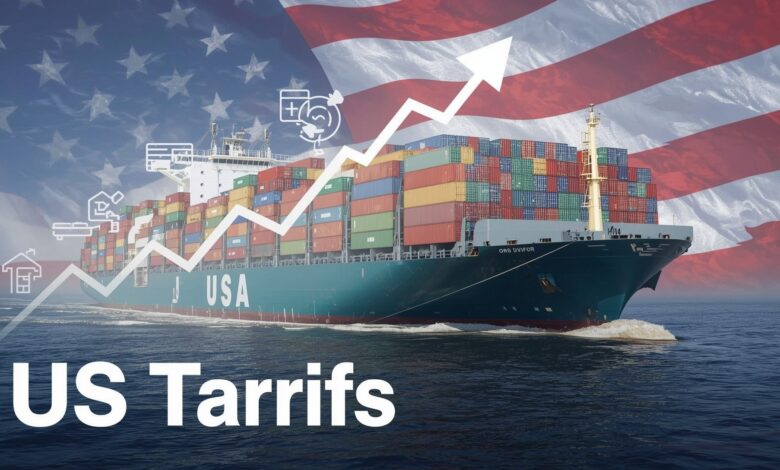US Tariffs: Definition, Types, and Impact on Global Trade

Featured Snippet Answer:
US tariffs are taxes imposed by the United States government on imported goods and services. They are designed to protect domestic industries, generate revenue, and influence trade relations. Tariffs can be charged as a percentage of the product’s value (ad valorem), as a fixed fee per unit (specific), or a combination of both (compound).
What Are US Tariffs?
US tariffs are government-imposed taxes on products brought into the United States from other countries. These charges aim to shield domestic producers from foreign competition, reduce trade deficits, and raise federal revenue.
Example: If an imported car costs $20,000 and a 10% tariff is applied, the importer must pay $2,000 in tariffs before selling the car in the US.
Types of US Tariffs
The US government uses three primary tariff structures:
- Ad Valorem Tariffs – A set percentage of the product’s value (e.g., 10% of import price).
- Specific Tariffs – A fixed charge per unit (e.g., $5 per ton of steel).
- Compound Tariffs – A combination of both ad valorem and specific tariffs.
Why Does the US Impose Tariffs?
Tariffs serve multiple strategic purposes in US trade policy:
- Protect local industries from low-cost imports
- Encourage domestic manufacturing and job creation
- Counteract unfair trade practices such as dumping or subsidies
- Strengthen bargaining power in trade negotiations
Impact of US Tariffs
1. On Consumers
Tariffs often cause price increases on imported goods, such as electronics, apparel, and automobiles. This can reduce purchasing power and contribute to inflation.
2. On Businesses
- Domestic manufacturers may benefit as imported goods become less competitive.
- Importers and retailers often face higher costs, which can lead to price hikes for consumers.
3. On Global Trade
Tariffs can lead to retaliatory measures from other countries, sparking trade disputes and potentially disrupting global supply chains.
Recent Developments in US Tariffs
In recent years, tariffs have been central to trade disputes with China, the European Union, and other partners. Notable areas impacted include:
- Steel and aluminum products
- Technology components
- Agricultural goods such as soybeans and pork
Shifts in political leadership, international agreements, and economic pressures can quickly alter tariff rates and policies.
US Tariffs and E-commerce
With the growth of global online marketplaces, tariffs have become a key concern for e-commerce businesses. Sellers importing goods to the US often:
- Choose domestic suppliers to avoid tariffs
- Reclassify products to lower-duty categories
- Use US-based fulfillment centers to reduce cross-border costs
How to Stay Updated on US Tariffs
Because tariff policies can change rapidly, staying informed is essential:
- Check the USTR website for official announcements
- Subscribe to trade and economic news outlets
- Consult customs brokers for product-specific tariff classifications
Quick Facts About US Tariffs (Perfect for Snippet Box)
- Definition: Taxes on imported goods into the US
- Purpose: Protect industries, generate revenue, balance trade
- Types: Ad valorem, specific, compound
- Impact: Higher consumer prices, competitive advantage for domestic producers
Conclusion
US tariffs are a major policy tool that shape the nation’s economy, protect local industries, and influence global trade relations. While they can support domestic jobs and production, they also raise prices for consumers and sometimes trigger international disputes. For businesses and individuals alike, understanding tariffs is key to navigating the complex world of global trade.




